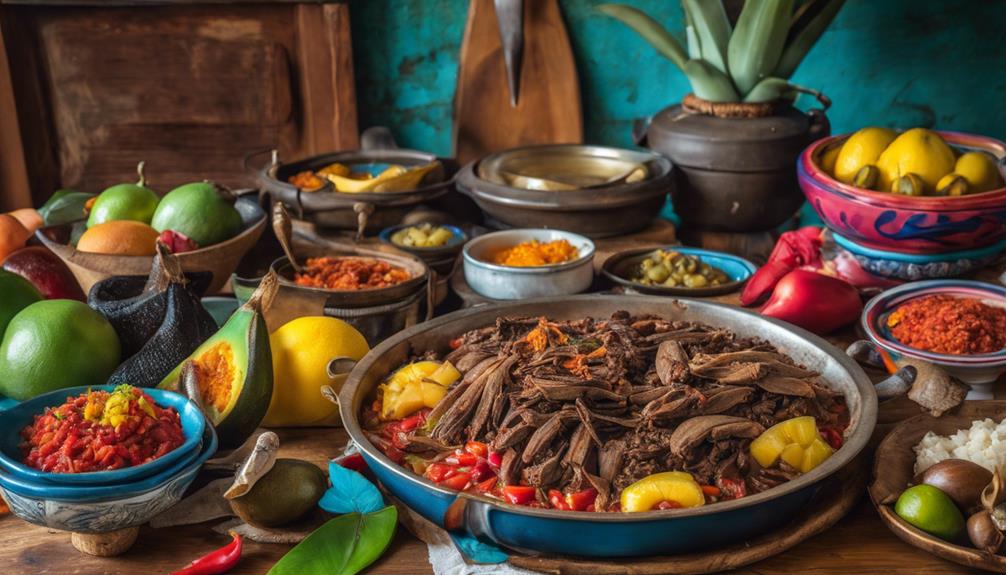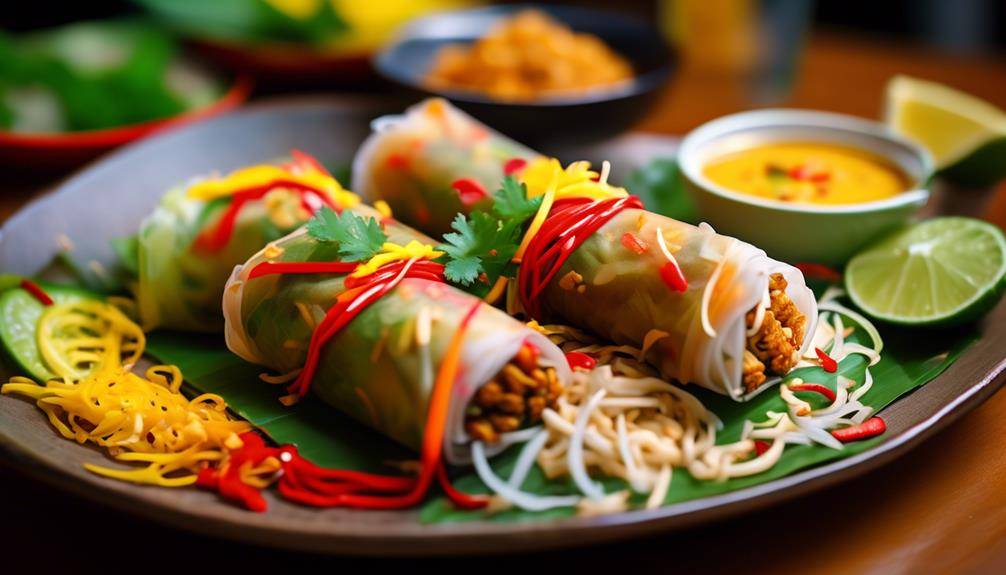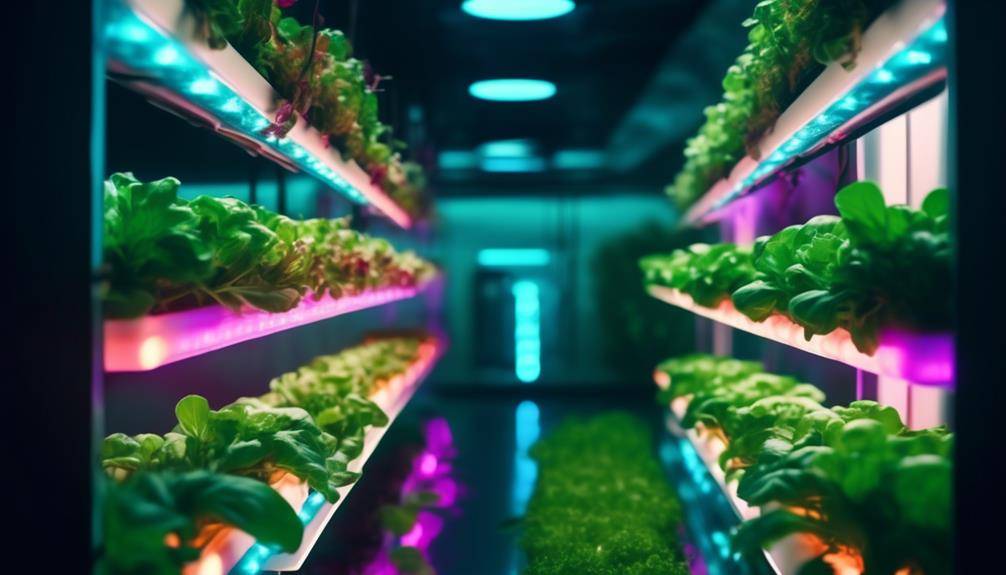Amazing Healthy Japanese Vegetarian Options

Healthy Japanese Vegetarian Options; If you’re a vegetarian, you may be concerned about finding healthy options when dining at Japanese restaurants. However, you’ll be pleasantly surprised to discover that there are plenty of delicious and nutritious choices available to suit your dietary preferences. From sushi rolls bursting with fresh vegetables to flavorful miso soup, there is a wide variety of dishes that will satisfy your taste buds. But that’s not all – there’s something even more exciting about these Japanese vegetarian options that you won’t want to miss.
Sushi Rolls
If you’re a vegetarian looking for delicious Japanese cuisine, you’ll be delighted to discover the wide range of sushi rolls available to satisfy your cravings. Sushi rolls are versatile and can be made with a variety of ingredients, making them the perfect option for vegetarians. From traditional favorites to creative innovations, there are plenty of sushi roll variations that cater to your dietary preferences.
One popular vegetarian sushi roll is the Avocado Roll. This simple yet flavorful roll consists of creamy avocado wrapped in seaweed and rice. The smooth texture of the avocado pairs perfectly with the sticky rice, creating a delightful combination of flavors. Another delicious option is the Cucumber Roll. This refreshing roll features crisp cucumber slices wrapped in rice and seaweed. It offers a light and refreshing taste that is perfect for those who enjoy a lighter sushi option.
When it comes to sushi roll presentation techniques, Japanese chefs take great pride in creating visually appealing dishes. One common technique is called the Dragon Roll, which is made to resemble a dragon. This roll typically includes ingredients such as avocado, cucumber, and tempura, and is topped with thinly sliced avocado that is arranged to resemble scales. The presentation of this roll is truly a work of art, showcasing the skill and creativity of the chef.
Miso Soup
Miso soup, a comforting and flavorful Japanese classic, is a must-try vegetarian option for those looking to explore the depths of Japanese cuisine. Made from fermented soybeans, miso soup is not only delicious but also offers a range of health benefits.
One of the main benefits of miso soup is its high nutritional value. It is rich in essential vitamins and minerals, including B vitamins, vitamin K, and manganese. These nutrients support your overall health and boost your immune system.
Another advantage of miso soup is its probiotic properties. The fermentation process used to make miso creates beneficial bacteria known as probiotics. These probiotics promote a healthy gut by improving digestion and aiding in nutrient absorption.
Miso soup is also low in calories and fat, making it a great option for those watching their weight. It is a filling and satisfying dish that can help you feel satiated without consuming excess calories.
To make a healthy miso soup, start with a base of vegetable broth or dashi, a traditional Japanese soup stock. Add miso paste, which comes in different varieties such as white, red, and mixed. Experiment with adding tofu, seaweed, mushrooms, or green onions for added flavor and nutrition.
Tempura Vegetables
When it comes to vegetarian options in Japanese cuisine, one dish that stands out is crispy vegetable tempura. Imagine biting into a perfectly fried assortment of colorful vegetables, each coated in a light and crispy traditional Japanese batter. The tempura is then served with an array of dipping sauces, adding a burst of flavor to each bite. Whether you’re a vegetarian or just looking to add more veggies to your diet, tempura vegetables are a delicious choice that will leave your taste buds satisfied.
Crispy Vegetable Tempura
For a delicious and satisfying vegetarian option in Japanese cuisine, look no further than the mouthwatering Crispy Vegetable Tempura. This delectable dish consists of a variety of fresh vegetables, coated in a light and crispy batter, and deep-fried to perfection. One of the great things about Crispy Vegetable Tempura is that it can be enjoyed by everyone, including those with gluten sensitivities. There are gluten-free alternatives available, using ingredients such as rice flour or cornstarch, which still provide that same irresistible crunch.
Another wonderful aspect of this dish is the endless array of vegetable variations. From classic choices like sweet potato, zucchini, and bell peppers, to more unique options like lotus root or shiitake mushrooms, there is something for everyone to enjoy. So why not indulge in this delightful vegetarian treat and experience the delightful combination of crispy vegetables and Japanese flavors?
Traditional Japanese Batter
Indulge in the tantalizing world of Japanese cuisine as we explore the art of creating the perfect traditional Japanese batter for your crispy tempura vegetables. The traditional Japanese batter is what gives tempura its signature light and crispy texture. Made with a simple mixture of flour, water, and sometimes eggs, this batter is incredibly versatile and can be used to coat a variety of vegetables. Here are some key points to keep in mind when making traditional Japanese batter:
- Use a combination of all-purpose flour and cornstarch for a lighter texture.
- Add ice-cold water to the dry ingredients to create a light and crispy coating.
- For a gluten-free option, substitute the all-purpose flour with rice flour.
Assorted Tempura Dipping Sauces
To enhance the flavors of your crispy tempura vegetables, explore a variety of assorted tempura dipping sauces. These sauces add a burst of flavor to your tempura, taking it to a whole new level. From traditional to innovative, there are numerous tempura sauce variations to choose from. One popular option is tentsuyu, a savory sauce made from soy sauce, mirin, and dashi. It brings a delicate balance of sweet and salty flavors to your tempura.
Another variation is ponzu sauce, which combines citrusy flavors with soy sauce, adding a refreshing tang to your dish. These dipping sauces not only elevate the taste but also provide health benefits. Tempura, when enjoyed in moderation, can be a nutritious choice, as the vegetables retain their nutrients through the quick frying process. So, indulge in these delicious tempura dipping sauces and savor the goodness of Japanese cuisine.
Seaweed Salad
With its vibrant colors and refreshing taste, the Seaweed Salad is a delightful addition to any Japanese vegetarian menu. This popular dish is made from a variety of seaweeds, such as wakame, kombu, and nori, which are rich in essential nutrients. Here are some reasons why you should consider adding seaweed salad to your diet:
- Health Benefits:
- Seaweed is packed with vitamins and minerals, including iodine, calcium, iron, and vitamin C, which are all essential for maintaining a healthy body.
- The high fiber content in seaweed helps promote digestion and can aid in weight management.
- Seaweed is also known for its detoxifying properties, helping to eliminate toxins from the body and support overall health.
- Recipe Variations:
- Seaweed salad can be made with a variety of ingredients, allowing for endless possibilities. Some popular additions include cucumber, sesame seeds, ginger, and soy sauce.
- You can also experiment with different dressings, such as a tangy soy-sesame dressing or a zesty citrus dressing, to add even more flavor to your salad.
- For a heartier meal, you can add tofu or edamame to your seaweed salad, providing a good source of plant-based protein.
- Nutritional Value:
- Seaweed is low in calories and fat, making it a healthy choice for those watching their weight.
- It is also a great source of antioxidants, which help protect the body against oxidative stress and prevent chronic diseases.
- The high mineral content in seaweed contributes to bone health, cardiovascular health, and overall well-being.
Incorporating seaweed salad into your Japanese vegetarian menu not only adds a burst of flavor but also provides numerous health benefits. So why not give it a try and enjoy this nutritious and delicious dish today?
Tofu Teriyaki
Get ready to tantalize your taste buds with the delectable flavors of Tofu Teriyaki. This Japanese vegetarian dish combines the wholesome goodness of tofu with the rich and savory taste of teriyaki sauce. Tofu, a versatile and protein-packed ingredient, is the star of this stir-fry dish.
To make Tofu Teriyaki, start by marinating the tofu in a flavorful sauce. The tofu marinade typically consists of soy sauce, ginger, garlic, and a touch of sweetness from honey or mirin. This marinade helps infuse the tofu with delicious flavors, making it even more enjoyable to eat.
Once the tofu has absorbed the flavors, it is time to stir-fry it to perfection. Heat a bit of oil in a pan and add the marinated tofu. Cook it until it becomes golden brown and slightly crispy on the outside. The tofu’s texture becomes delightfully chewy, providing a satisfying bite in every mouthful.
Next, pour the teriyaki sauce over the tofu and stir-fry for a few more minutes. The sauce caramelizes, creating a sticky glaze that coats the tofu, adding depth and sweetness to each bite. The combination of the tofu’s subtle taste and the umami-packed teriyaki sauce creates a harmonious balance of flavors that will leave you craving more.
Serve your Tofu Teriyaki with a side of steamed rice and some sautéed vegetables for a complete and satisfying meal. The rice absorbs the flavorful sauce, while the crisp vegetables add a refreshing contrast to the tender tofu.
Tofu Teriyaki is a healthy and delicious vegetarian option that showcases the versatility of tofu. It’s a dish that will not only please your taste buds but also provide you with a nutritious and satisfying meal. So, why not give it a try and enjoy the mouthwatering flavors of Tofu Teriyaki today?
Vegetable Gyoza
After savoring the delightful flavors of Tofu Teriyaki, it’s time to explore another delectable Japanese vegetarian option: Vegetable Gyoza. These dumplings are a popular dish in Japan and are loved for their crispy yet tender texture and flavorful fillings. Vegetable Gyoza is made with a thin wrapper that is filled with a combination of finely chopped vegetables, such as cabbage, carrots, and mushrooms. The fillings are seasoned with soy sauce, garlic, ginger, and sesame oil, giving them a savory and aromatic taste.
Cooking techniques play a crucial role in achieving the perfect Vegetable Gyoza. Here are some techniques that can help you make mouth-watering dumplings:
- Frying: Vegetable Gyoza can be pan-fried to create a crispy texture on the bottom while keeping the top soft and steamed. The fried side adds a delightful crunch to each bite.
- Steaming: Steaming the dumplings helps to retain the moisture and softness of the filling. It also ensures that the wrapper is cooked evenly and becomes slightly translucent.
- Boiling: Boiling the Gyoza is a healthier alternative to frying. It results in a softer texture and allows the fillings to fully absorb the flavors of the broth.
The flavorful fillings are what make Vegetable Gyoza so irresistible. The combination of fresh vegetables and aromatic seasonings creates a burst of flavors in every bite. The cabbage adds a slight sweetness, while the carrots provide a subtle crunch. The mushrooms bring an earthy and savory taste, and the garlic and ginger add a zing of spice. All these ingredients come together harmoniously to create a satisfying and delicious vegetarian dish.
Next time you’re craving a Japanese vegetarian option, give Vegetable Gyoza a try. With its cooking techniques and flavorful fillings, it is sure to be a delightful addition to your culinary repertoire.
Udon Noodles
Udon Noodles, a staple in Japanese cuisine, are thick and chewy wheat noodles that are often served in a savory broth with various toppings. These noodles have a unique texture that sets them apart from other types of noodles. They are made from wheat flour, water, and salt, which gives them their distinctive taste.
There are many different udon noodle recipes that you can try. One popular variation is Kitsune Udon, which is topped with fried tofu slices. Another delicious option is Tempura Udon, where the noodles are served with crispy tempura vegetables on top. For a spicy kick, you can try adding kimchi to your udon noodles.
Udon noodles can be enjoyed hot or cold, depending on your preference. In the summer months, chilled udon noodles are a refreshing and light option. They are typically served with a dipping sauce and various toppings such as green onions, grated ginger, and sesame seeds.
If you’re looking for a quick and easy meal, udon noodles are a great choice. They cook quickly and can be paired with a variety of vegetables, tofu, or meat alternatives. You can also experiment with different broths and seasonings to create your own unique udon noodle dish.
Okonomiyaki
Get ready to discover the delicious world of Okonomiyaki! This traditional cabbage pancake is a must-try dish in Japan. What makes it so special is the versatility of its toppings and fillings, allowing you to customize it to your taste. Plus, Okonomiyaki is cooked using healthy techniques, making it a nutritious option for vegetarians. So, let’s dig in and explore the wonders of Okonomiyaki!
Traditional Cabbage Pancake
Looking to try a delicious and traditional Japanese dish? Look no further than the mouthwatering Traditional Cabbage Pancake, also known as Okonomiyaki. This savory pancake is a staple in Japanese cuisine and is loved for its combination of flavors and textures. Made with a batter of flour, eggs, and shredded cabbage, Okonomiyaki is cooked on a griddle and topped with a variety of ingredients such as sliced pork, seafood, or vegetables. It is then brushed with a tangy and savory sauce, sprinkled with bonito flakes, and garnished with mayonnaise and green onions. Here are three reasons why the Traditional Cabbage Pancake is a must-try dish:
- Versatility: Okonomiyaki can be customized with your choice of toppings, making it a versatile dish that can be adapted to suit different dietary preferences.
- Nutritious: The use of cabbage adds a healthy dose of fiber, vitamins, and minerals to the pancake, making it a nutritious option.
- Healthy Cooking Techniques: Okonomiyaki is typically cooked on a griddle with minimal oil, making it a healthier alternative to deep-fried dishes.
Indulge in the flavors of Japan with this classic and satisfying Traditional Cabbage Pancake.
Versatile Toppings and Fillings
For a personalized and flavorful experience, explore the world of versatile toppings and fillings that can be added to your Okonomiyaki. The possibilities are endless when it comes to customizing this traditional Japanese dish. Start by choosing from a variety of versatile toppings such as pickled ginger, green onions, nori flakes, or sesame seeds. These toppings add a burst of flavor and texture to your Okonomiyaki.
As for filling options, you can experiment with different combinations of vegetables like shredded cabbage, carrots, and mushrooms. For a protein-packed version, consider adding tofu, tempeh, or even vegetarian-friendly alternatives like mock meat. Don’t forget to drizzle your Okonomiyaki with a generous amount of Okonomiyaki sauce and mayonnaise for that extra richness. Get creative and make your Okonomiyaki truly your own with these versatile toppings and filling options.
Healthy Cooking Techniques
To ensure a healthier twist on your Okonomiyaki, explore cooking techniques that reduce the amount of oil used without compromising on taste. Healthy sautéing techniques and nutrient-rich steaming methods are excellent options to try.
- Healthy sautéing techniques:
- Use a non-stick pan: By using a non-stick pan, you can significantly reduce the amount of oil needed to cook your Okonomiyaki.
- Control the heat: Sauté your vegetables on medium heat to avoid burning them and ensure they retain their nutrients.
- Add water or broth: Instead of using excess oil, try adding a small amount of water or vegetable broth to the pan to help cook your ingredients.
- Nutrient-rich steaming methods:
- Steam before grilling: Steam your vegetables before adding them to your Okonomiyaki. This helps retain their nutrients and ensures they are tender and flavorful.
- Invest in a steamer basket: A steamer basket is a great tool for steaming vegetables and maintaining their nutritional value.
- Steam until tender: Steam your ingredients until they are cooked through and tender, ensuring that you don’t overcook them and lose valuable nutrients.
Hijiki Rice
Hijiki Rice is a flavorful and nutritious dish that combines the rich umami taste of hijiki seaweed with the delicate texture of perfectly cooked rice. This traditional Japanese recipe offers a healthy and delicious option for those looking to incorporate more plant-based meals into their diet.
Hijiki, a type of seaweed native to Japan, is packed with essential minerals and vitamins. It is a great source of dietary fiber, iron, calcium, and magnesium. Incorporating hijiki into your diet can help support healthy digestion, strengthen bones, and promote overall well-being.
To prepare hijiki rice, you will need a few simple ingredients: hijiki seaweed, rice, soy sauce, mirin (a sweet rice wine), and vegetables like carrots and mushrooms. Start by soaking the hijiki seaweed in water, then rinse and drain. Next, cook the soaked hijiki along with the rice, vegetables, and seasonings. The result is a fragrant and nutrient-rich dish that is both satisfying and nourishing.
Hijiki rice is not only delicious but also versatile. You can customize the recipe by adding your favorite vegetables or protein sources like tofu or tempeh. It can be enjoyed as a main course or as a side dish to complement other Japanese-inspired dishes.
Agedashi Tofu
Are you ready to tantalize your taste buds with a delightful Japanese appetizer? Look no further than Agedashi Tofu, a dish that will surely satisfy your cravings. Imagine biting into crispy tofu cubes, perfectly fried to a golden brown, while enjoying the traditional flavors of soy sauce, mirin, and dashi. With its combination of texture and taste, Agedashi Tofu is a must-try option for any vegetarian looking for a delicious Japanese dining experience.
Tasty Tofu Appetizer
Indulge your taste buds with the delectable and savory flavors of Agedashi Tofu, a mouthwatering Japanese vegetarian appetizer. This tofu dish is crispy on the outside and silky on the inside, making it a perfect start to any meal. Here are three reasons why Agedashi Tofu should be on your must-try list:
- Versatile: Agedashi Tofu can be prepared in various ways to suit your taste. Whether you prefer it lightly seasoned or marinated in a flavorful sauce, there are countless tofu recipes and marinades to choose from.
- Health Benefits: Tofu is a great source of protein, low in calories, and cholesterol-free, making it a nutritious choice for vegetarians. Agedashi Tofu provides a satisfying and wholesome appetizer option.
- Authentic Flavors: With its deep umami flavors and crispy texture, Agedashi Tofu captures the essence of Japanese cuisine. It is often served with a tangy dipping sauce, providing a perfect balance of tastes.
Don’t miss out on the delightful experience of enjoying Agedashi Tofu. It’s a delicious introduction to the world of Japanese vegetarian cuisine.
Crispy Tofu Cubes
If you’re looking to explore more Japanese vegetarian options, you’ll be delighted by the crispy tofu cubes known as Agedashi Tofu. These little bites pack a punch of flavor and are a popular appetizer in Japanese cuisine. To make these crispy tofu cubes, you’ll need a few key ingredients and a simple tofu marinade.
Start by cutting firm tofu into bite-sized cubes and marinating them in a mixture of soy sauce, mirin, ginger, and garlic. Let the tofu soak up the flavors for about 30 minutes before coating them in cornstarch and frying them until golden brown. The result is a crispy exterior with a soft and creamy interior, perfect for dipping into a savory sauce. Agedashi Tofu is a delicious and satisfying vegetarian option that is sure to impress.
Traditional Japanese Flavors
To truly experience the traditional flavors of Japanese cuisine, one must indulge in the delightful crispy tofu cubes known as Agedashi Tofu. These golden-brown nuggets are made by coating soft tofu in a light batter and then deep-frying it until it becomes irresistibly crispy on the outside. The tofu is then served in a flavorful dashi broth, garnished with green onions and grated daikon radish.
To enhance your Japanese culinary adventure, here are some other traditional Japanese flavors you should explore:
- Traditional Japanese Desserts:
- Matcha-flavored sweets like mochi and green tea ice cream
- Dorayaki, a sweet pancake filled with red bean paste
- Wagashi, beautifully crafted traditional Japanese confections
- Vegan Ramen Options:
- Shoyu ramen made with a soy-based broth
- Miso ramen, featuring a rich and savory miso broth
- Vegetable ramen with a variety of fresh, seasonal vegetables
These dishes will transport your taste buds to Japan and allow you to savor the authentic flavors of this incredible cuisine.
Frequently Asked Questions: Healthy Japanese Vegetarian Options
Are Sushi Rolls Always Vegetarian-Friendly?
Sushi rolls are not always vegetarian-friendly. However, there are plenty of delicious alternatives available. Traditional Japanese vegetarian dishes include tempura vegetables, tofu dishes, and vegetable-filled udon or soba noodles.
What Are the Main Ingredients Used in Miso Soup?
Miso soup, a staple in Japanese cuisine, typically contains miso paste, tofu, seaweed, and sometimes vegetables. This flavorful soup not only satisfies your taste buds but also offers health benefits like aiding digestion and boosting the immune system.
Can Tempura Vegetables Be Made With Gluten-Free Batter?
Yes, you can make tempura vegetables with gluten-free batter. There are many gluten-free tempura recipes available that use alternative flours like rice flour or cornstarch. These alternatives are a great option for those with dietary restrictions.
Is Seaweed Salad High in Iodine?
Seaweed salad is a nutritious choice for you. It’s packed with vitamins and minerals, including iodine. Iodine is essential for thyroid function and helps regulate metabolism. So go ahead and enjoy that iodine-rich seaweed salad!
How Is Tofu Teriyaki Prepared in a Healthy Way?
To prepare tofu teriyaki in a healthy way, marinate firm tofu in a mixture of soy sauce, ginger, garlic, and a touch of honey. Grill or bake until golden and serve with steamed veggies for a satisfying meal. It’s a great alternative protein source for vegetarians.
Conclusion
In conclusion, Japanese cuisine offers a wide variety of healthy and delicious vegetarian options. From fresh sushi rolls filled with colorful vegetables to flavorful miso soup and crispy tempura vegetables, there is something for everyone. Don’t forget to try the refreshing seaweed salad and the mouthwatering tofu teriyaki. For those who crave noodles, udon and the savory okonomiyaki are perfect choices. And if you’re looking for a unique rice dish, hijiki rice and the crispy agedashi tofu are sure to satisfy your taste buds. So why wait? Explore the world of healthy Japanese vegetarian dishes today!








